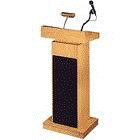
Discipline-Based Education Research Group Speaker Series
ORCID IDs
Date of this Version
11-1-2012
Document Type
Article
Citation
Presented to UNL Discipline-Based Education Research Group, 2012.
Abstract
In this talk I will present on projects in which insects were used as instructional tools. This presentation will give an overview of how insects can be used for teaching with a variety of student age groups and how inquiry instruction can be promoted with insects. I will present overviews of 3 projects including Bumble Boosters, Bugs in the Classroom, and Web‐based insects identification tools. Bumble Boosters created a community of researchers that studied bumble distribution and abundance and artificial nesting domicile preferences. Forty Nebraska high schools were involved in this project.
Bumble Boosters’ teaching objectives were to raise public awareness of the environmental importance of pollinators, enhance students’ understanding of scientific investigations, increase student’s knowledge of insect biology and pollination ecology, and to engage students in networking with other students to solve a shared problem.
Bugs in the Classroom ‐ Bugs in the classroom was a professional development initiative with the goal of empowering teachers to use insects in science inquiry instruction in elementary classrooms. This initiative included workshops for elementary educators on science inquiry and teaching with insects. This talk includes a description of the workshop as well as an evaluation of the impact of the workshop on participating teachers' knowledge of scientific inquiry, entomology knowledge, and inquiry practice.
Web‐based Insect Identification Tools ‐ The purpose of this study was to determine whether undergraduate students receiving web‐based instruction based on traditional, key character, or classification instruction differed in their performance of insect identification tasks. Results of this study support that short web‐based insect identification exercises can improve insect identification performance.
Included in
Curriculum and Instruction Commons, Educational Methods Commons, Higher Education Commons, Science and Mathematics Education Commons


Comments
Copyright 2012, Doug Golick.